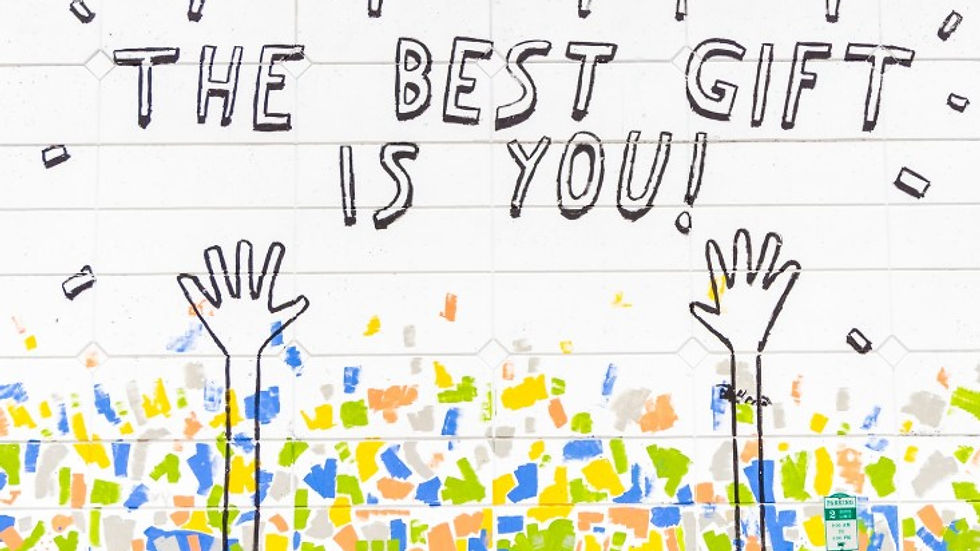Why Having a Best Friend at Work Is the Heart of Authentic Leadership
- Authentic Leaders, Charlotte Søndergaard

- Jun 17
- 3 min read
Updated: Sep 23
Workplace friendships aren’t just a nice-to-have—they’re a powerful force. From personal stories to compelling data, it’s clear that genuine connections at work build stronger, happier, and more resilient cultures. They often spark innovation, drive better results, and create friendships that last a lifetime.
When I facilitate training sessions and workshops, one of the most provocative things I say is about Gallup’s research and their Q12 survey question: “Do you have a best friend at work?”
Almost every time, the audience reacts strongly — some are surprised and others skeptical. Why? Because the idea of having a “best friend” at work challenges the traditional view of professionalism and workplace relationships.
But here’s the truth: I’ve had more than one best friend at work, and it’s been one of the most valuable parts of my professional life. Even after we’ve moved on to new adventures, our friendships remain warm, supportive, and joyful. We still lift each other up, remind each other of our worth, and share laughter that heals — true happiness. It reminds me that when you build genuine connection at work, it stays with you — sometimes for life.
And Gallup’s research confirms what I’ve lived: having a best friend at work is not just a nice-to-have. It’s a crucial driver of engagement, performance, and well-being. Leadership is ultimately about relationships — and fostering real friendships at work is one of the most powerful ways leaders can cultivate connection, trust, and commitment within their teams and organisation.

What Does “Best Friend at Work” Really Mean?
Gallup defines a best friend at work as someone you trust deeply and feel close to in your daily work life. This is the person you turn to for honest feedback, emotional support, and encouragement when things get tough. It’s the colleague who truly sees you, understands your challenges, and cheers you on.
And it’s not just a social bond — it’s a strategic advantage that shapes how connected, motivated, and productive we feel in our roles, and how hopeful we remain about the future.
The Business Case: Friendship Drives Performance
Gallup’s research links best friendships at work to powerful business outcomes. Employees with a best friend at work are significantly more likely to:
Deliver outstanding customer service
Share innovative ideas
Collaborate more effectively
Work more productively
Create safer and more positive workplaces
Feel hopeful, satisfied and fulfilled at work
What Leaders Can Do to Foster Real Connection
As leaders, we must recognize the value of friendships at work and actively create the conditions for them to grow.
Here’s how:
Create Space for Connection: Build in time for informal interactions — virtual coffee breaks, team rituals, walk-and-talks, or unstructured moments where people can simply be human together.
Model Vulnerability and Openness: When leaders share authentically, they make it safe for others to do the same — opening the door for real connection.
Encourage Peer Support: Cultivate a culture where colleagues lift each other up, ask for help, and celebrate each other’s wins.
The Takeaway for Authentic Leaders
Effective leadership isn’t just about strategy, structure, or KPIs. It’s about human connection. When we lead with authenticity and make space for true friendships at work, we build teams that are more resilient, engaged, and fulfilled — even through hard times.
So, the next time someone questions the idea of having a best friend at work, I hope you’ll remember this:
“A best friend at work is not just a colleague — they are the heartbeat of authentic leadership and the secret weapon of thriving teams and organisations.”
The Long-Term Benefits of Workplace Friendships
Workplace friendships contribute to long-term success. They create an environment where employees feel valued and understood. This sense of belonging can lead to lower turnover rates and higher employee satisfaction.
Building Trust Through Friendship
Trust is the foundation of any strong relationship. When colleagues become friends, they are more likely to trust each other. This trust fosters collaboration and open communication, which are essential for a thriving workplace.
Friendship and Mental Health
Having friends at work can significantly impact mental health. Supportive relationships help reduce stress and anxiety. When employees feel they have someone to turn to, they are more likely to cope with challenges effectively.
The Role of Leadership in Fostering Friendships
Leaders play a crucial role in cultivating friendships. By encouraging social interactions and creating a supportive environment, leaders can help employees form meaningful connections. This not only benefits individuals but also enhances team dynamics.
Conclusion: Embrace Workplace Friendships
In conclusion, workplace friendships are vital for a healthy and productive work environment. They enhance employee engagement, boost morale, and contribute to overall success. By fostering these connections, leaders can create a culture where everyone thrives.
By embracing the idea of having a best friend at work, we can transform our workplaces into spaces of joy, support, and collaboration.



Comments